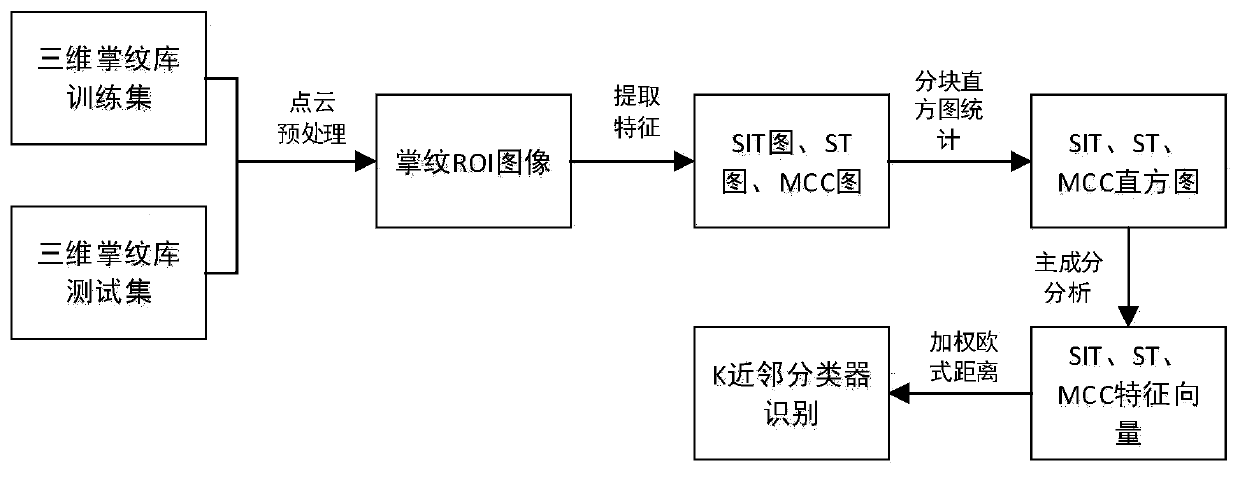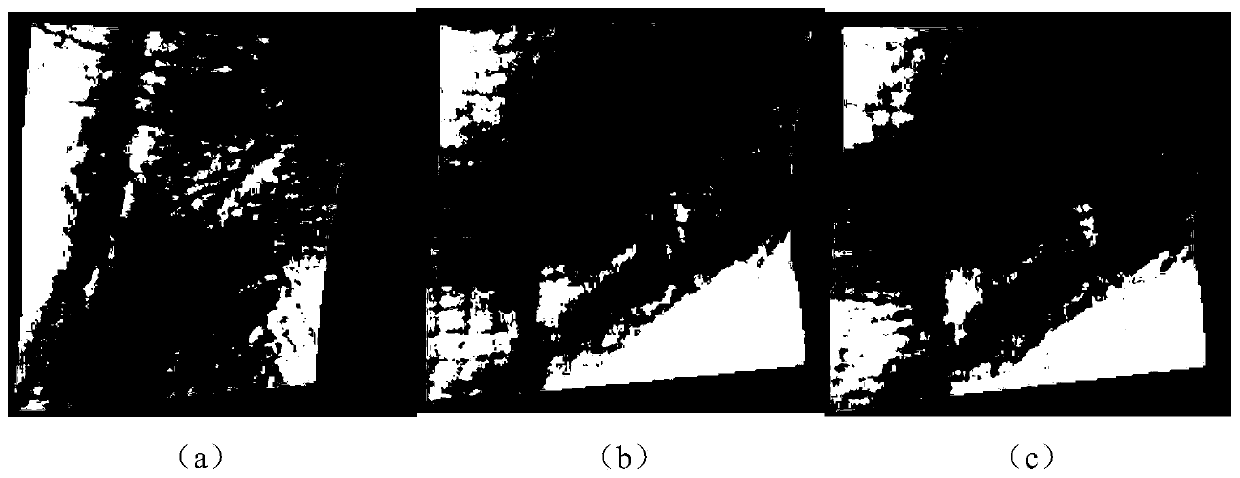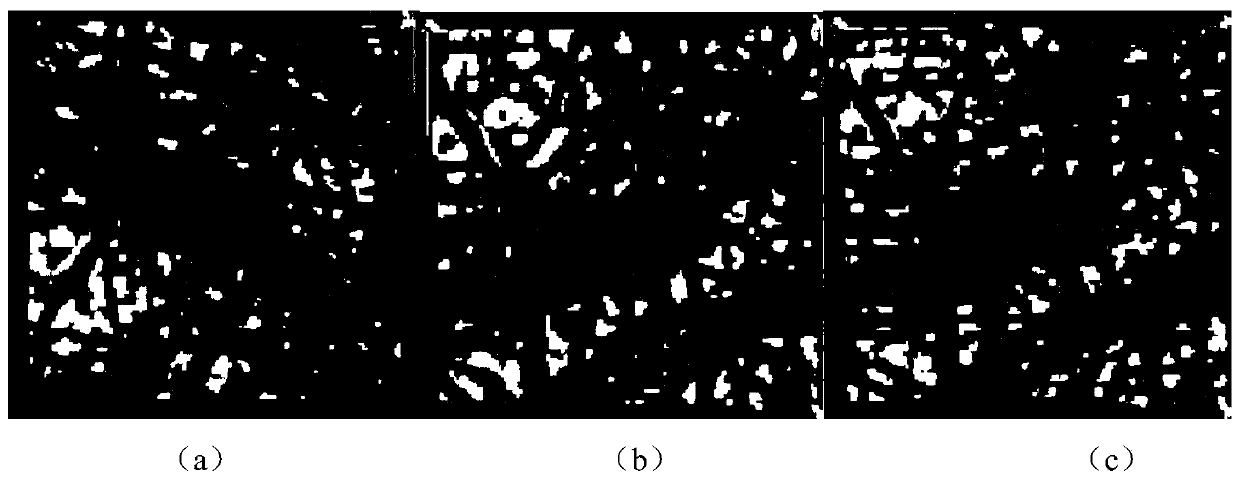Three-dimensional palmprint recognition method integrating multiple features and principal component analysis
A principal component analysis, palmprint recognition technology, applied in three-dimensional object recognition, character and pattern recognition, matching and classification, etc., can solve problems such as misclassification, poor anti-interference ability of competitive coding, misjudgment, etc.
- Summary
- Abstract
- Description
- Claims
- Application Information
AI Technical Summary
Problems solved by technology
Method used
Image
Examples
Embodiment 1
[0087] The experimental platform of the present invention is Intel(R) Core(TM) i7-4770 (3.40GHz) processor, 8GB memory and Visual Studio 2015. The experimental data comes from the PolyU 2D+3D palmprint database of the Hong Kong Polytechnic University [38]The 3D part of the dataset contains 8,000 3D palmprint samples collected from 400 different palms, of which the 400 palms are from 200 volunteers. They are collected in two stages, with 10 palms collected from each palm in each stage. pattern sample.
PUM
 Login to View More
Login to View More Abstract
Description
Claims
Application Information
 Login to View More
Login to View More - R&D
- Intellectual Property
- Life Sciences
- Materials
- Tech Scout
- Unparalleled Data Quality
- Higher Quality Content
- 60% Fewer Hallucinations
Browse by: Latest US Patents, China's latest patents, Technical Efficacy Thesaurus, Application Domain, Technology Topic, Popular Technical Reports.
© 2025 PatSnap. All rights reserved.Legal|Privacy policy|Modern Slavery Act Transparency Statement|Sitemap|About US| Contact US: help@patsnap.com



